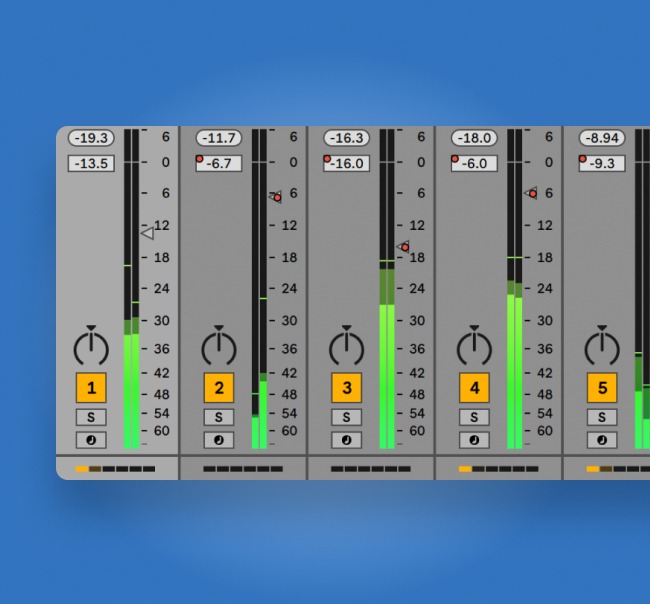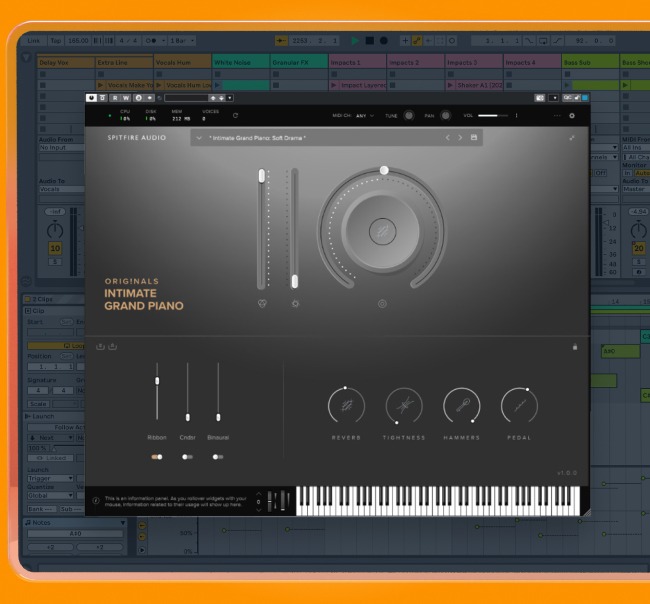
How to Mix Bass: 5 Tips for Mixing Bass to Get Powerful Low End
Mixing bass is one of the most difficult parts of producing a balanced track.
Pro mixes almost always have powerful low end that moves air and gives the song a solid foundation.
But what does it take to make bass sounds fit well in a mix? What are the main techniques and how do they apply to different types of bass?
In this article I’ll break down the basics and suggest five strategies to mix better bass in your tracks.
Theory guides, production tips, new free plugins, gear guides and more—delivered weekly
Keep up with the LANDR Blog.
Bass mixing fundamentals
Let’s start with why it’s so hard to get your low-end to sit right in a mix.
First off, there are lots of sources in any DAW session that have energy in the low frequencies.
Drums, synth patches, acoustic instruments and even vocals contain a spectrum of frequencies with some energy concentrated in the low end.
Drums, synth patches, acoustic instruments and even vocals contain a spectrum of frequencies with some energy concentrated in the low end.
One of the main mistakes beginner and intermediate mixers make has to do with this issue. Mixing music is about clearing up space for each sound to sit, but it can feel uncomfortable to filter lots of low end if you listen to your sounds in solo.
But if you listen in the context of the mix, the truth is you can use a high-pass filter to clear out excessive lows on many elements that don’t need to occupy this range.
The key is to start with a plan for which instruments will sit in each range and focus on the most important frequencies to bring out these qualities.
Of course, the best solution is to capture sounds with this in mind so you don’t end up with too much bass in the first place.
Secondly, bedroom studios can have notoriously poor acoustics if they aren’t set up with acoustic treatment.
This means that even if you have an excellent set of monitor speakers, your room might give you an inaccurate picture of your mix—especially for your low frequencies.
It means you’ll struggle to clearly hear the separation between instruments and gauge how low end much is too much.
6 Tips for Better Bass Mixing
Even though it may seem difficult, you can mix bass well if you understand the problems I described above and follow a handful of key strategies.
Here are 6 essential tips for mixing better bass.
1. Know your low frequencies
How well do you know your frequency ranges by ear? If you’ve never stopped to think about exactly which ones you need to boost or cut with EQ, it’s time to brush up.
Try boosting and cutting specific ranges as you sculpt your sounds with EQ. Your results will be different in every mix, but here’s a rough breakdown of the bass frequency ranges to know.
30 Hz and below
This is the deepest bass range that some producers call the “sub bass.”
It’s very close to the lower limit of human hearing at 20 Hz. Sounds in this range are more felt than heard.
In fact, sub bass sounds cause issues in the majority of mixes since consumer speakers can rarely reproduce these frequencies well.
Some ultra-low end information may be important depending on the genre, but if your mix lacks clarity, it’s often best to remove it or decrease it with a high-pass filter.
35-60 Hz
This range usually includes the low-end body of the bass drum, whether it’s a kick sample or an acoustic kit.
Since it’s the lowest audible range in the mix, many producers like to boost here to make the mix sound deeper and more extended. My advice is to be gentle and choose only one element to accentuate here.
60-100 Hz
This range usually includes the power and weight of the bass sound itself. Many of the notes have their fundamental frequency in this area.
It certainly needs to stand out in the mix, just be careful about boosting too much. Extra energy here can conflict with the low mids.
2. Carve out around it
As you make mix decisions about your bass, the rest of the sounds matter too.
Moving up the frequency range, the low midrange has a strong effect on the space where your bass can fit.
The problem is that most instruments and voices have a lot going on in this area. The trick is to carve it out enough that nothing sounds thin and still provide space below for bass and kick.
You’ll often hear engineers suggest scooping lots of 300 Hz out of kick drum sounds. The reason is to declutter this area so the low end instruments command only one range.
You’ll often hear engineers suggest scooping lots of 300 Hz out of kick drum sounds. The reason is to declutter this area so the low end instruments command only one range.
You can do the same with your bass sound if it has lots of energy in this area.
3. Boost the highs
This bass mixing technique might be counterintuitive for some. But most bass sounds get their definition from the high frequencies, not just the subby lows.
Just like the other sounds in your mix, there’s a lot happening in a complex bass sound in different frequency ranges.
In some cases, you may need to boost the high end to get enough sparkle for a bass to stand out in the mix.
And while high frequencies like 8 kHz and above are worth exploring, other bass types might need more power in the upper mids.
In these cases, adding energy at 2.5 kHz-5 kHz can give bass sound the extra push they need to compete in an aggressive mix.
Just be careful as you boost frequencies in this range since adding too much can get harsh.
4. Focus on the attack
It’s tempting to apply heavy compression to bass sounds to make sure your low end elements are consistent and controlled.
Good compression is important for bass, but it’s easy to go too far. The initial attack of the bass is important to give your brain the important details about its timbre.
Squash it down too much and it won’t pop—no matter how much you push the fader.
The initial attack of the bass is important to give your brain the important details about its timbre.
The solution is to use a slow enough attack time to ensure the initial transient has space to breathe. If you’re not sure how that works, head over to our guide to compression for the full breakdown.
If you’re using a synth bass with naturally subdued attack, try adjusting the patch to get more definition at the note onset.
Hot tip: Using the noise oscillator in your patch can help add energy to the onset of sounds created with analog-style subtractive synthesis. Alternatively, FM synth basses are naturally punchy and aggressive, so these are worth a try if you’re stuck.
5. Add saturation
Many modern bass synth styles require flat, subby bass tones that boom underneath the mix.
I’m talking about any bass synth with roots in the pitched 808 kick oscillator that’s common in trap and hip-hop.
This sound is very close to a raw sine wave with no additional harmonics in the high frequencies.
This can make it tough to attack with EQ since boosting the highs won’t have a strong effect.
It’s the reason why many producers use saturation to help give it a harder edge. Saturation plugins introduce controlled clipping that adds harmonic richness to the sound.
This additional information helps the upper midrange frequencies stand out and be heard in the mix.
A nice trick is to blend saturation in parallel so you can control the balance of the dry and saturated sounds.
Bass is your mix foundation
Mixing bass can be difficult for some producers, but it’s nothing to be scared of once you break it down.
In fact, mixing bass well is one of the most important skills for any engineer.
If you understand the basics and have a few key techniques to guide you, you’ll never worry about bad bass again.
Gear guides, tips, tutorials, inspiration and more—delivered weekly.
Keep up with the LANDR Blog.







